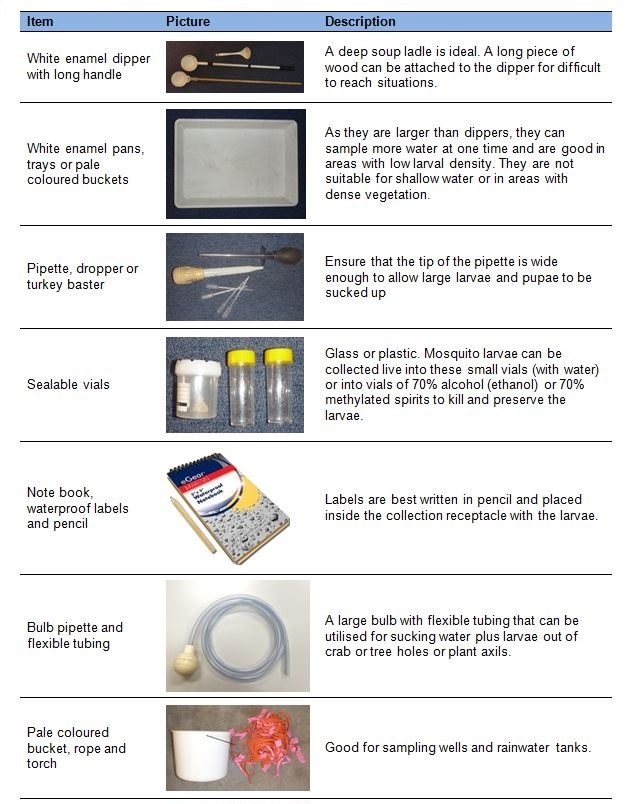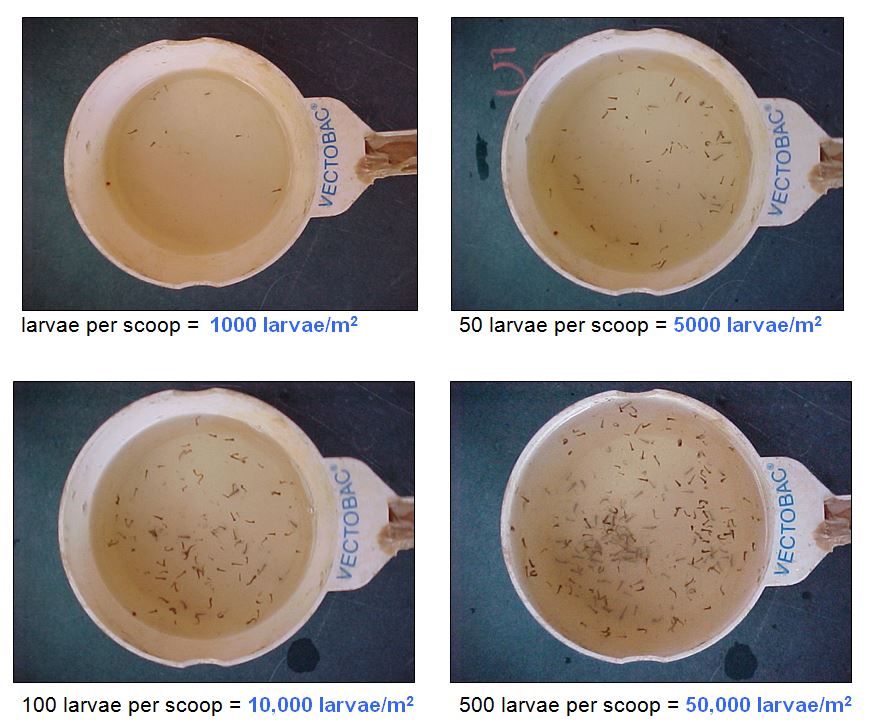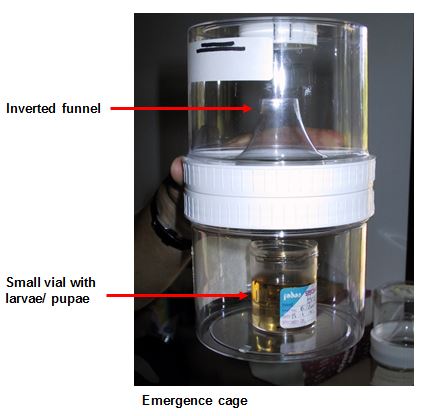Larval surveys are an important part of integrated mosquito management. The purpose of a larval survey is to find out:
- species composition (vectors /or nuisance) at a given place and time;
- breeding habitat of the site;
- larval stage (instar stage or pupa);
- larval density; and
- effect of environmental factors (rainfall, tides, etc) on mosquito diversity or density.
Different sampling procedures may be required for different habitats, but these can be roughly divided into ground water habitats and artificial receptacles. Most mosquito control operations are concerned with ground water habitats. Receptacle sampling is used to gain information on Aedes species that primarily breed in artificial containers. Once breeding sites have been identified, they can be prioritised in terms of species, breeding frequency and larval density. Regular larval monitoring can then be undertaken as required. This information is used to inform mosquito management activities and the timing of larvicide treatments (pre-treatment survey). It can also be used to evaluate the efficacy of a treatment (post-treatment survey).
Pre-treatment larval monitoring
Prior to the implementation of a mosquito management strategy, particularly one involving the application of larvicide, pre-treatment larval surveys are essential. The need for chemical application is determined by the species type (a disease vector or severe nuisance pest) and the density of larvae per m2 of water surface. Once the need for treatment has been established, the development (instar) stage of the larvae needs to be ascertained as this will determine the appropriate chemical to use.
Post-treatment larval monitoring
Post-treatment surveys are used to determine the efficacy of a larvicide application. A comparison of the pre-treatment and post-treatment survey results, approximately 24-72 hours apart, will indicate whether larval mosquito populations have been affected by the chosen management method. Ongoing, regular post-treatment larval surveys are also suitable for physical management methods (runnelling, draining, filling, removal of vegetation, improving water movement, sealing tanks, etc) as they will help to determine whether it continues to have the desired effect.
Monitoring groundwater habitats
When conducting a larval survey of a ground water habitat, it is important to sample around the entire margins of the breeding site. This will help you to find the source of water and determine if breeding in a particular part of the habitat is more prolific. Mosquito larvae are usually found where surface vegetation or debris is present. In large bodies of water, larvae are generally confined to marginal areas or floating surface materials. Strong wind can move larvae to the windward side of the habitat, thus plan your dipping site accordingly.
Permanent sample points that are representative of each habitat should be chosen and marked on vector control maps. These permanent points should be at sites where there is year-round access. Larval sampling should occur at least once per month, using the same sampling technique each time. In tidally affected areas, sample frequency will need to be coordinated with local tides. Increased frequency of sampling is necessary for transition periods between times of little and times of increased mosquito activity, such as the start of spring or the wet season. Additional larval samples should be taken at different points throughout the year to make sure the permanent points are efficient indicators of larval breeding elsewhere.
Larval sampling equipment
To undertake larval surveillance, you will need the following sampling equipment:

Larval sampling procedures
Medical Entomology has developed a step-wise table of sampling procedures for both natural and artificial habitats to assist in your larval surveillance efforts.
Calculating larval density
Use the number of larvae collected per scoop to estimate the larval density per square metre of a waterbody’s surface. This will become easier as you gain more experience. The following image can be used to assist you.

Larval rearing
Mosquito larvae and pupae can be more difficult to identify to species level than adults. As a result, it is often easier to rear them for identification purposes. Rearing can also be used to determine the effectiveness of a larvicide treatment.
Emergence cages
Larvae can be collected in a small vial with water and placed in the bottom half of the rearing jar. Once adults emerge they fly through the inverted funnel and are trapped in the top part of the jar. The entire rearing jar can be placed in a freezer to knock-down the adults. Adults can then be collected using forceps. Ensure the rearing jar is not left in the freezer for a long time as it will kill the larvae and pupae in the small vial.
